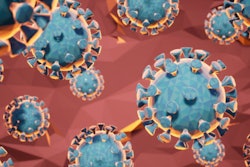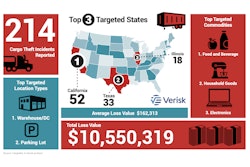
Think you’re safe from the COPVID-19 coronavirus because you’re cooped up in your truck all day? Think again. Even though truck driving is a profession that provides a lot of natural “social distancing,” it doesn’t mean drivers can’t easily come down with COVID-19 if they’re not careful. Here are a few tips to help stay healthy on the road.
- Maintain social distancing outside the truck. Whenever possible, keep at least six feet distance between yourself and others, particularly at areas like truck stops, loading docks, and warehouses. Politely refuse if someone tries to shake your hand. If you need to grab a bite to eat, get it to go. If you absolutely need something from the store, try to shop when it’s less busy. You can even utilize site-to-store services at stores like Walmart and Target to minimize time inside.
- Watch what you touch. In stores or truck stops, avoid touching anything you’re not going to buy. Avoid leaning on counters or touching common surfaces in stores. Use a paper towel or gloves when pumping fuel to avoid touching the nozzle and touchpad. (And speaking of gloves—if you decide to wear gloves, make sure you use them properly. If you wear gloves to pump fuel and then handle your cell phone, scratch your nose, or climb inside your truck before removing them, it’s no different than going without gloves.)
- Wash your hands often. Use soap and water to wash your hands for at least 20 seconds every time you get out of the truck and before you reenter it. Keep hand sanitizer in the truck to use before you get on the road. (And remember that hand sanitizer needs to be at least 60% alcohol to get your hands clean. That means Tito’s and other alcoholic beverages won’t do the job.)
- Clean your truck frequently. Use cleaning wipes or disinfectant spray to clean door handles, the steering wheel, the gear shift, knobs and any other touchpoints in your truck. Spray the seats and sleeping areas with disinfectant spray and wash your bedding often.
- Avoid shared exercise equipment. Exercise is always important, even during a pandemic, but there are ways to stay in shape without touching shared exercise equipment at your company’s terminal or a local gym. Go for a walk or do pushups, or looking into small, lightweight gym equipment you can keep in the truck.
- Make sure the showers are clean. If you’re an over-the-road trucker, you may need to use a truck stop shower during your time out. Before you step in though, make sure that the shower has been cleaned since the last person used it. If you’re uncertain, you can always spray it down with some of your own shower cleaner.
- Leave dirty clothes at the door. When you head home (whether you are a local, regional, or OTR driver), make a point of removing your shoes and clothes in the garage before entering the house. Take the clothes and drop them in the washer immediately, then hop in the shower. Once you are bathed and wearing clean clothes, then you can greet your family.
- Use laundry sanitizer. If your work clothes can’t be bleached, consider washing them with laundry sanitizer. These products are added to the wash or fabric softener dispenser and will kill any germs that may be on your clothes.
- Don’t be a hero. If you notice you aren’t feeling well, start running a fever, or display any coronavirus symptoms, speak to a healthcare provider immediately. If you aren’t able to go to a clinic, take advantage of telehealth services. They can evaluate your symptoms and decide if you should be tested for the coronavirus. This is not the time to push through and keep going if you feel under the weather. Get checked out so you don’t end up spreading the virus to others.
- Stick to the facts. There’s a lot of misinformation out there, particularly on social media. Despite what you may have read on Facebook, vodka isn’t a substitute for hand sanitizer and gargling will not keep you from getting the virus. Make sure you are getting information about COVID-19 and ways to stay healthy from reliable sources like the CDC and WHO.








